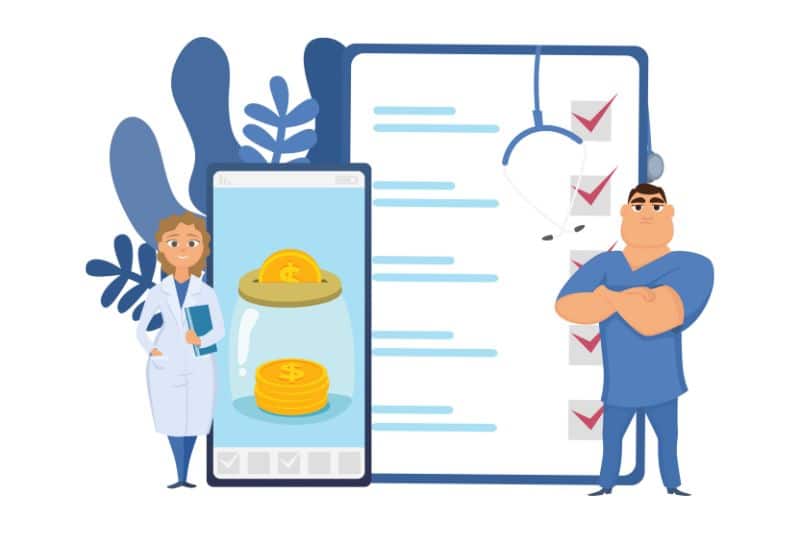Navigating Health Insurance Claims: Understanding the Process

Given the dynamic nature of India’s healthcare system, financial stability depends on an understanding of the nuances involved in filing a health insurance claim. Visit Policy Ghar to learn more about various insurance plans, such as those for car, health, two-wheeler, and term insurance. Continue reading if you’re unclear about the health insurance claim procedure.
Examine Your Policy for Health Insurance:
It’s crucial to comprehend the intricacies of your policy before beginning the claims procedure. Understanding your policy lays the groundwork for a simple and straightforward claim procedure. Learn about the things that are and aren’t protected by your insurance plan. This avoids unpleasant surprises when processing claims. The network hospitals that are covered by your coverage must be identified. Selecting a network hospital enables a cashless claim procedure, which streamlines the payment process.
How to Get Through the Documentation Maze
The claims procedure involves a large amount of paperwork. Organizing them well ensures a smooth and issue-free claims procedure. To get your claim accepted, substantial reports must be compiled and presented on schedule. The following are the crucial documents:
Photo ID proof, Original discharge summary, Your health e-card, Doctor’s consultation slip and prescriptions for diagnostic tests, Prescription for medicines and original pharmacy bills, Other original receipts from the hospital, Ambulance receipt, if applicable, Proof of address, Doctor’s prescription recommending hospitalization, Certificate from the attending doctor, Diagnosis reports of X-rays, blood tests, etc., Breakup of the hospital bill, FIR, in case of an accident & other based on the type of hospitalization.
Five Crucial Pointers for Easy Claims:
Know Your Policy Inside and Out:
To understand terms, exclusions, and coverage, go over your policy document. To make wise judgements in an emergency, familiarise yourself with coverage limitations, waiting periods, and network hospitals.
Select Network Hospitals:
The claim process is streamlined when network hospitals are used. Find these hospitals nearby or in places you frequently visit to save time and trouble.
Notify As Soon As Possible:
Notify your insurer right once of any hospital stays, whether scheduled or unexpected. Claims are not denied when notification deadlines are met.
Arrange the Documentation:
Save any pertinent records, including prescriptions, bills, and medical reports. Maintaining their accessibility speeds up the claims procedure.
Follow the Claim Procedures:
Every insurer handles claims in a different way. Following these procedures, such as accurately completing out claim forms, reduces the likelihood of delays or denials.
Selecting Between Reimbursement Claims and Cashless
It is imperative that one comprehends the differences between reimbursement claims and cashless transactions. Each has advantages, and your choice depends on the circumstances.
Cashless Claims:
Choose a cashless claim if you are using the services of a hospital that is part of the policy network. By paying the hospital directly, the insurer reduces your financial participation.
Claims for Reimbursement:
Reimbursement claims are applicable in certain scenarios or at non-network hospitals. After paying the expenses in full, get the reimbursement from your insurance.
How to File a Cashless Claim
The steps listed below can be used to file a cashless claim:
-Select the appropriate network hospital for your medical care. The policy contains a list of hospitals in the network.
-Notify the insurance company three days in advance, and if an emergency occurs, obtain clearance for the claim within twenty-four hours after being admitted to the hospital. Insurance firms are currently attempting to approve claims in less than 90 minutes.
-Get the pre-authorization form and make sure you fill it out correctly. Send it in with your health card and proof of identity.
-The insurance company will examine the claim and work directly with the hospital to resolve any outstanding balances.
How to File a Reimbursement Claims:
Notify your insurance company about your claim. This usually needs to be completed three days after visiting the hospital, or twenty-four hours in case of an emergency. Get the claim settlement form from the hospital or your insurance company. When you are released from the hospital, pay your medical costs and gather all of your documentation. Send your insurance company the completed claim form together with the relevant receipts. Your documents will be examined by your insurance provider. They will process your claim and put the funds into your account as soon as everything is approved.
A Comprehensive Guide for Filing Medical Insurance Claims
Record-Keeping for Services:
The medical professional creates records of the services provided, including procedure and diagnosis codes, treatment schedules, and associated expenses. The insurance claim is supported by these documents.
Submission of the Claim:
Presenting the insurance claim to the insurance provider in order to receive payment is the following stage. There are two ways to do this: manually by submitting paper forms, or online through the billing system of the supplier.
Claim Reimbursement:
Following an examination of your claim, the insurance provider determines your reimbursement amount depending on your coverage and the costs incurred. They may occasionally bargain with the healthcare professional regarding the amount they will cover.
Effective management of medical costs requires an understanding of the forms and procedures for filing health insurance claims. Reimbursement claims cover services received at non-network hospitals, while cashless claims offer a simple and convenient experience when treated at network hospitals. Through regular education about the network hospitals, timely notification of the insurer, and provision of precise documentation, consumers can effectively manage the health insurance claim procedure and protect their financial stability whether faced with medical emergencies or scheduled treatments.
It’s critical to comprehend the differences between reimbursement claims and cashless claims. Network hospitals accept cashless claims, with direct bill settlement. Conversely, reimbursement claims entail paying bills up front and then requesting reimbursement.
Health insurance is a valuable asset, but filing a claim requires preparation and understanding. You may reduce financial stress and promote peace of mind in the face of medical concerns by being proactive and knowledgeable. If you want to purchase heath insurance for yourself or your loved ones, check out the plans offered by Policy Ghar.

